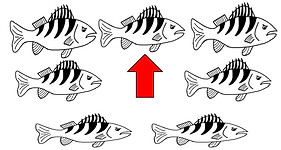Spiny Water Flea (Bythotrephes longimanus) and Wisconsin Lakes
Background
Spiny water flea (Bythotrephes cederstroemi) is an invasive zooplankton that has spread across several Wisconsin lakes and heavily preys upon native zooplankton communities. Native zooplankton, such as Daphnia, that are the major grazers of many Wisconsin lakes and give us the clear water we all enjoy. Lake Mendota in Madison, Wisconsin was invaded by spiny water flea in 2009 and has since experienced drastic declines in Daphnia abundances and a severe loss of summer water clarity.
This project is focused on the potential to control spiny water flea populations with predation pressure from native fish. To do so, we need to better understand the predator prey dynamics of native fish and spiny water flea across the landscape.

Stomach contents of yellow perch and white bass have contained high numbers of spiny water flea

Research Questions
-
What are the predator prey dynamics of fish and spiny water flea?
-
Who's eating spiny water flea?
-
-
What are the costs/benefits of eating spiny water flea?
-
Could fish planktivory be a management tool for spiny water flea?
-
How do invasive and native species adapt in novel ecosystems?
-
Invasions are a unique opportunity to study rapid evolution
-
We use stable isotopes of Carbon and Nitrogen to understand how the food web changes seasonally


By increasing the predation pressure on Spiny Water Flea we are hoping to decrease their abundances and ecosystem impacts

Geometric morphometrics is used to understand how a fish's morphology relates to its feeding

